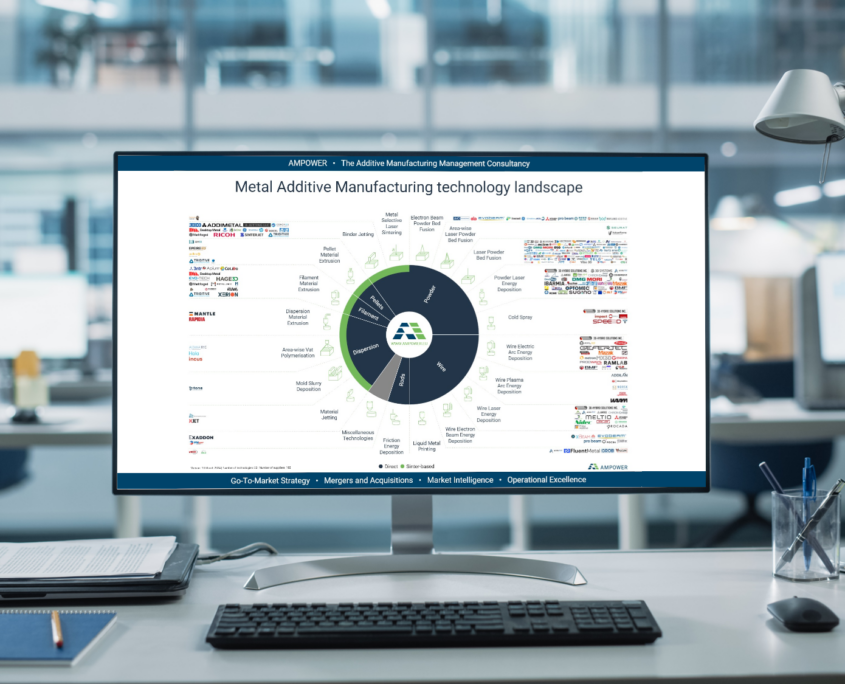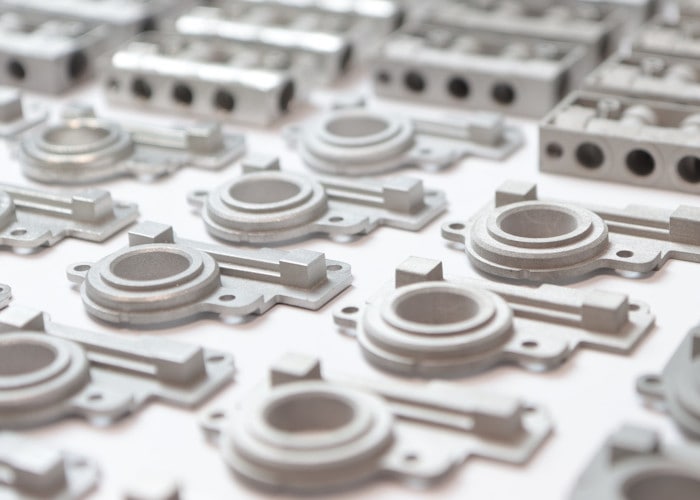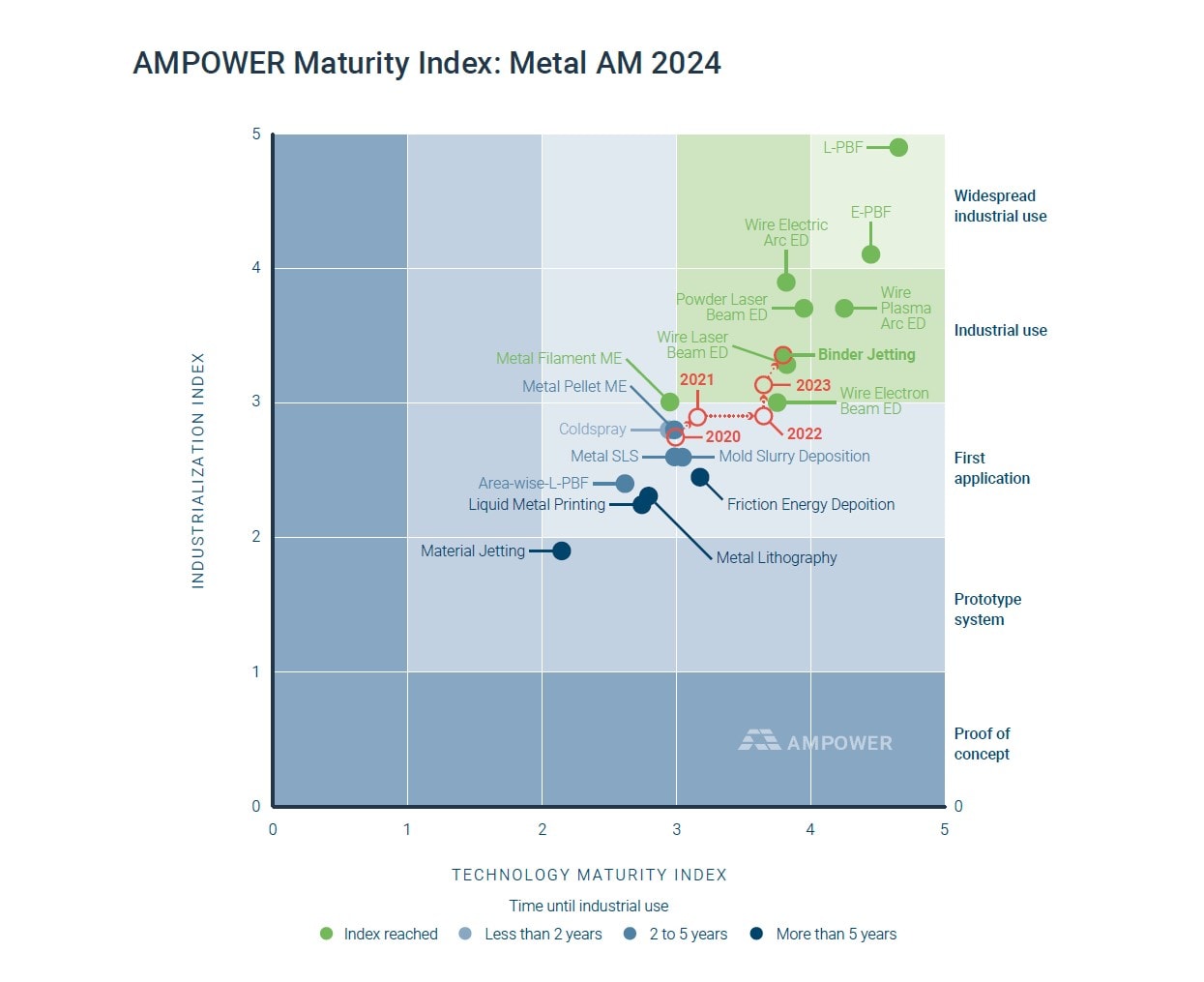Metal Additive Manufacturing
With the development of Laser powder bed fusion, the first technology for metal Additive Manufacturing was established. Today we know almost two dozen different metal 3D printing processes, adding new ones almost every day. Many of these processes have their origins in long-established technologies such as build-up welding and metal injection molding. Others are completely new technologies.
The most widespread among the technologies for metal Additive Manufacturing is the Laser powder bed fusion. This is reflected in the number of different system providers and by the number of machine in the market as reported by the AMPOWER Report. Great expectations in terms of reduction of costs and production time are currently aroused by the binder-based systems. While the sintering process largely corresponds to the long-known sintering process, the system providers of this new metal 3D printing technology are mainly distinguished by their part-shaping technology. Also, the base material is different. While granulate and wire materials contain binder and metal powder together, binder jet systems use separate components.
New metal 3D printing technologies
Binder-based technologies aim at the high design freedom of the established technologies for metal Additive Manufacturing. In the case of wire-based processes, on the other hand, high resolution is not the focus. These process create a “near-net shape” blank whose surfaces are machined where smoothness or high resolution features are required. In the case of powder bed and binder systems, on the other hand, only the functional surfaces are reworked since usually the as build surface is already sufficient. However, the build-up welding processes offer significantly higher build-up rates.
In our Technology Map for Metal Additive Manufacturing, we subdivide the procedures based on the ASTM / ISO 52900. However, new metal technologies are now known that elude a known classification. Systems from vendors such as GROB and FABRISONIC use completely new approaches to energy input and raw materials. However, these technologies still have a relatively young degree of maturity. In addition, it should be noted that even with the same classification, the procedures may still differ.
The application determines the metal 3D printing technology
Metal 3D printing is more diverse today than ever. More so today is the principle that the application determines the technology. Production managers and developers need to familiarize themselves with many of the technologies to redefine the right one for each application. The opposite is that hardly any company can build expertise in all these technologies for metal Additive Manufacturing. In addition, each metal 3D printing process has a different degree of maturity.
Companies tackling metal Additive Manufacturing for the first time must make the right strategic decision to focus on the right metal 3D printing technology for their applications. Today, it is no longer enough to follow the mainstream and see Laser powder bed fusion as the only thrust direction. In addition to its own scope of application, the decision should also include the degree of technological maturity, the qualification requirements and a time component. For short-term success and highly regulated industries, you may rely on mature processes. With longer-term strategic planning, a focus on the currently still new processes for metal Additive Manufacturing can be useful.
The maturity level of metal Additive Manufacturing
Each metal Additive Manufacturing technology has reached a different technology maturity. To evaluate the state of the art, AMPOWER has introduced a new methodology – the AM Maturity Index. This index offers users a tool for quick assessment based on both technology and industrialization maturity. The technology index evaluates current production process capabilities and machine concepts, while the industrialization index reflects the existing knowledge base and the level of use cases in the industry.
Newly introduced direct metal technologies with a still low maturity level are for example Resistance Welding, Friction Deposition, and Liquid Metal Printing. These printing processes enable the direct production of metallic parts without requiring further process steps.
Additionally, several new sinter-based technologies are in development and nearing market introduction. Unlike direct technologies, these create only the “green” part additively, which then requires sintering to achieve the desired metallic properties. These technologies include Metal Lithography, Metal SLS, and Mold Slurry Deposition.
Download the Metal Additive Manufacturing Technology Landscape here
We provide the technology overview as a free download in pdf format. You are welcome to include the overview in your documents, stating the source.






